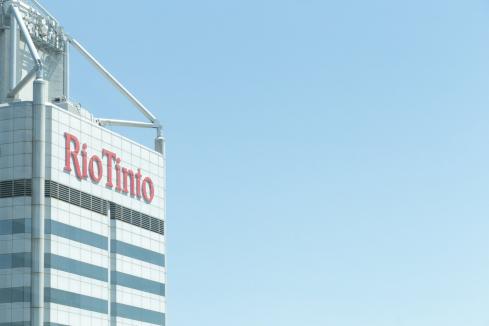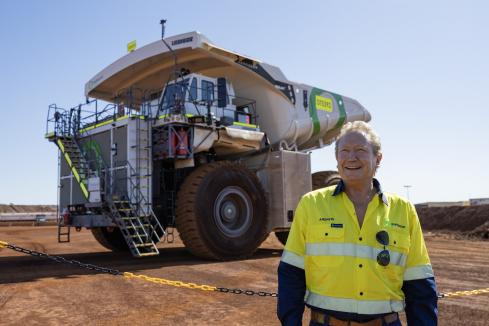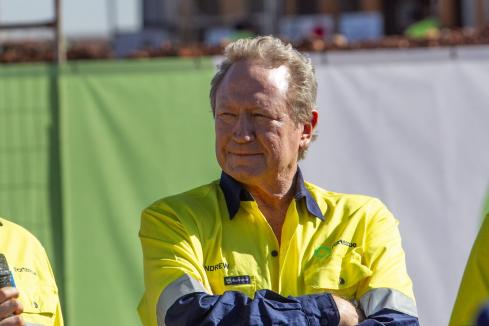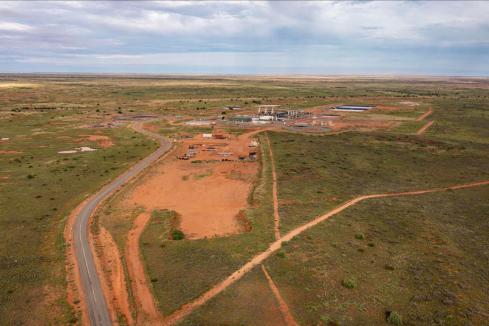Limitless WA: Autonomous trains and trucks in the resources industry have brought benefits to Western Australia beyond productivity.

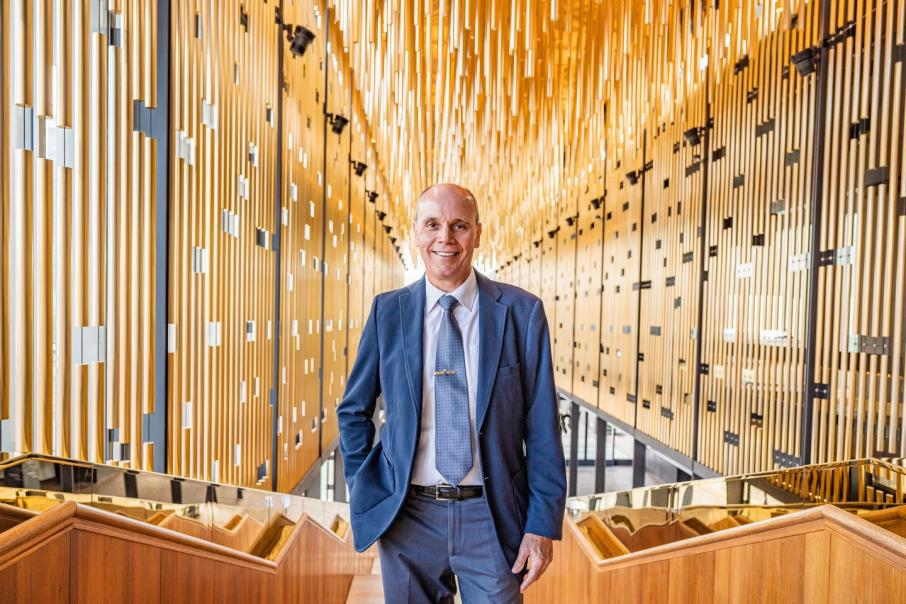
Rio Tinto engineer Lido Costa admits he endured many sleepless nights over the decade he spent spearheading the development of the world’s first autonomous heavy haul rail network in the Pilbara.
But Mr Costa’s concerns were not about the technology.
Despite the unwavering faith he held in the AutoHaul concept and his team, Mr Costa was acutely aware that the $1.3 billion project was at the mercy of the volatile resources sector.
Anything from a fall in the iron ore price to international trade tensions could derail the vision.
“In the mining business, so much can change - and then decisions are made on that basis,” Mr Costa, Rio Tinto principal engineer on AutoHaul, told Business News.
“Rio Tinto always held belief in it and so did I.
“I had no doubt that we would get it to work, and we knew that it would change lives.
“I just didn’t know how long it would take; and that was my primary concern.”
Rio Tinto began investigating the automation of its iron ore haulage trains in 2006, until the global financial crisis soon after brought the company’s expansion projects to a grinding halt.
The AutoHaul project wasn’t resurrected until 2011, when the company struck a deal with Hitachi Group’s transportation arm, Hitachi Rail STS, to provide the autonomous haulage system.
It would be another six years before AutoHaul completed its first loaded run, and seven before a 2.4-kilometre-long train carrying 28,000 tonnes of iron ore was made fully operational.
Within months, almost all of Rio’s trains were running driverless, monitored from 1,500 kilometres away by operators based in Perth.
AutoHaul technology has increased average train speeds by 6 per cent and improved safety.
Those wins were not before the company ran thousands of hours of tests supported by a core team of engineers that remained committed to the project from start to finish.
Today, Rio’s trains have travelled more than 24 million kilometres in driverless mode, delivering iron ore 24 hours a day from remote mines in the Pilbara desert to ports across the north-west of the state and onwards to Asian buyers.

It’s lauded as the world’s largest robot, but the man who led AutoHaul’s creation likens its operation to a toy train set.
“We set up, arguably, the most sophisticated laboratory, certainly in Australia, I would imagine in the world – it simulates everything,” Mr Costa said.
“Before (AutoHaul), stopping the train required a whole set of logistics, which was a major constraint.
“When you’re sitting in Perth, it’s almost like operating a toy train set.
“You’re looking at this screen and you’ve got these trains going around, but you can change their speed and direction.”
It was merely fortuitous that it also safeguarded the company from the effects of the COVID-19 pandemic and subsequent border closures, Mr Costa said, having previously relied on train drivers from the eastern states.
For Rio Tinto, the most significant benefit of automated train haulage has been the elimination of what was once one of the most dangerous parts of its operations.
At the time, Mr Costa said there was a perception Rio was automating its trains to save on labour costs, but he said the business case for going driverless was about safety and avoiding train stops.
Before its implementation, the company’s train drivers had been required to travel 1.5 million kilometres by light vehicle every year, at all hours of the day and night, to relieve their colleagues.
By eliminating the need to stop the train over the course of its 40-hour journey, the company has removed one of the biggest risks to the safety of its staff while saving an hour each trip.
Mr Costa has clocked four decades in the train technology sector, working on the high-speed train linking Madrid and Seville in the 1990s and serving as chief engineer on the Perth to Mandurah line.
But AutoHaul was the highlight of his career.
“AutoHaul was really a world first,” he said.
“Nobody has ever done this, you know, how do we convince people that we can do this?
“Seeing that first delivery; it was a huge buzz, an achievement we really celebrated.”
At its peak, more than 420 engineers were working on the project, a third of whom were based in Europe and the United States.
Others were in offices across Australia, though the majority were based in Perth or on site in Karratha.
AutoHaul partner Hitachi Rail had 100 Perth-based staff working on the project alone, with a further 40 people stationed at its Brisbane office developing the software.
Hitachi supplied the communications and signalling system.
Air brake and train control systems manufacturer New York Air Brake, which was also a partner on the project, sent several of its engineers to Perth on secondment.
Fellow project partner Calibre credits its 10-year stint leading the engineering, procurement and construction of AutoHaul with having helped to position it as a leader in the rail automation space.
The company shared the expertise of some of its most senior Perth-based engineers, including head of technology solutions Matthew Reeder.
Like Mr Costa, Mr Reeder said the AutoHaul project was among the most memorable of his career, the benefits of which were continuing to be realised well after its completion.

Rio Tinto’s Pilbara rail network spans 1,500 kilometres. Photo: Rio Tinto
The acceleration of autonomous vehicles in the state is creating training opportunities.
Rio Tinto partnered with the WA government to develop the first nationally recognised educational courses on automation, and Westrac built an autonomous vehicle technician training centre in Collie.
Trucking on
Rail is one example of Western Australia’s leadership in deployment of autonomous vehicles, with others including light vehicles, drill rigs and haul trucks.
In June, Rio Tinto and mining equipment manufacturer Caterpillar unveiled the world’s first fully autonomous water truck for deployment at its $2.6 billion Gudai-Darri mine, a project it hopes will be among the most technologically advanced in the world.
But it was Perth-based iron ore miner Fortescue Metals Group that led the charge on autonomous truck haulage, becoming the first company to deploy CAT’s autonomous haulage trucks on a commercial scale in 2012.
With almost 200 autonomous trucks now in operation across its Solomon and Chichester hubs in the Pilbara, the company’s fleet is one of the largest in the world. It was the biggest fleet conversion to autonomous operation undertaken in the industry.
Although automation is often assumed to be synonymous with job losses, Fortescue’s transition was facilitated without a single redundancy.
Instead, the company offered thousands of its staff the opportunity to be upskilled or transferred to new roles within the business, according to Fortescue chief executive Elizabeth Gaines.

Ms Gaines told Business News the introduction of automation had also underpinned a 30 per cent improvement in productivity, while providing a safer working environment and greater workplace flexibility for its staff.
“Our early adoption of automation has allowed us to offer team members significant training opportunities and allowed many traditional site-based roles to be relocated to our operations centre in Perth,” she said.
“This has provided more workplace flexibility for team members who no longer need to regularly travel to site, allowing increased workforce participation by parents, and especially women, choosing to return to work after parental leave.”
Earlier this year, Fortescue successfully deployed a fleet of autonomous light vehicles at Christmas Creek, removing the need for the company’s mobile maintenance team to make 12,000 round trips annually.
In 2014, BHP launched a two-year trial of autonomous drilling at its Yandi iron ore mine before commissioning global mining equipment provider Epiroc to convert a further 18 blast hole drills to autonomous operation.
The deployment of the technology has increased productivity by 25 per cent and reduced maintenance costs by more than 40 per cent, according to BHP.
In 2020, iron ore miner Roy Hill struck a deal with Epiroc and automation specialist ASI Mining to convert the company’s fleet of 77 haul trucks from manned to autonomous.
Roy Hill started an autonomous drilling program in 2017.








